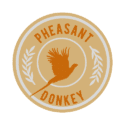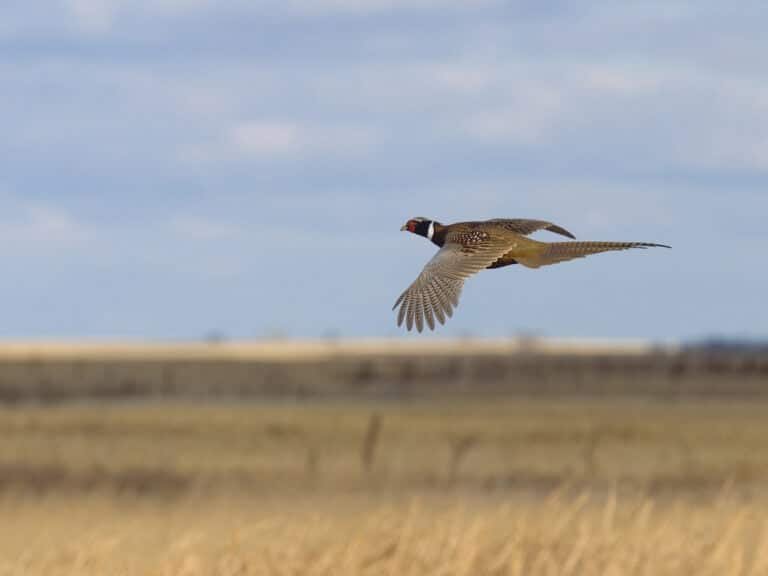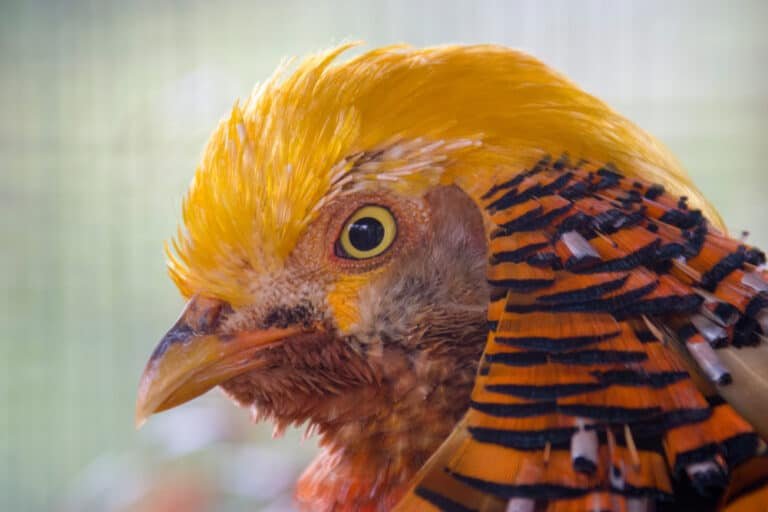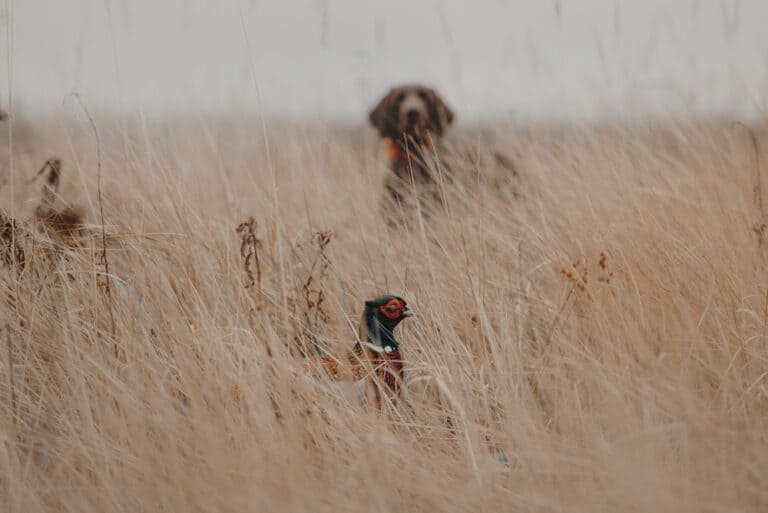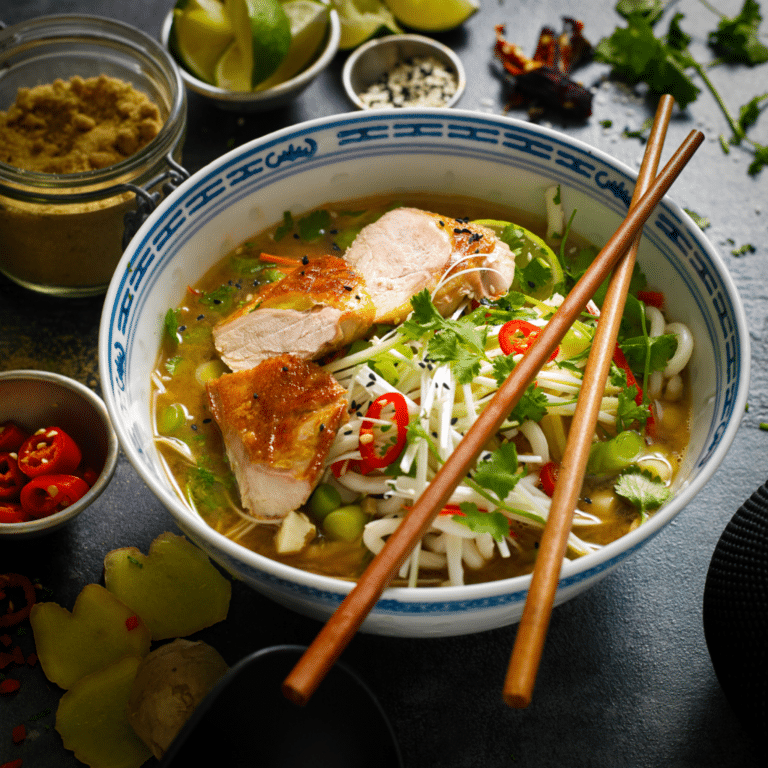Pheasant Hunting – Expert Advice for Your Best Hunt
Pheasant hunting, an age-old tradition rooted in the pursuit of game birds, has evolved into a beloved sport hunters cherish worldwide. With its excitement, skill, and connection to nature, pheasant hunting captivates individuals seeking challenge and camaraderie. As the crisp autumn air awakens the senses and golden foliage blankets the fields, here are some pheasant hunting tips to get you ready for the season.
A Beloved Tradition
Pheasant hunting has become popular due to its rich history and inherent allure. Originating in Asia and introduced to North America in the late 1800s, pheasants quickly adapted to their new habitats and flourished.
Over time, these vibrant birds became highly sought after for their striking appearance and challenging flight patterns. The allure of pheasant hunting lies in pursuing these magnificent creatures and experiencing nature’s beauty firsthand.
Hunters relish the serenity of dawn breaking over open fields, eagerly awaiting a glimpse of colorful plumage amidst swaying grasses. The symphony of rustling leaves underfoot adds to the sensory tapestry that captures hearts repeatedly.
Preparation for Success
Achieving success in pheasant hunting hinges on careful preparation and deep knowledge of one’s quarry. Hunters must understand that triumph is not solely measured by bagging games but by appreciating every aspect of their pursuit. Proper preparation begins with acquiring suitable gear tailored for this specific endeavor.
Choosing a reliable shotgun with appropriate gauge selection ensures effective shots while maintaining ethical standards. Equally important is selecting choke tubes that optimize shot patterns at various distances.
Clothing plays a vital role not only in comfort but also in blending seamlessly with the surroundings. Camouflage patterns that mimic the natural environment aid in remaining undetected by keen-eyed pheasants.
Well-fitted boots provide comfort and support, allowing hunters to traverse uneven terrain easily. Understanding the behavior patterns of pheasants is paramount in devising successful strategies.
Different species exhibit varying preferences for habitats such as grasslands, crop fields, or wetlands. Familiarizing oneself with one’s preferred environment facilitates efficient scouting and effective placement during hunts.
Proper preparation and knowledge form the bedrock of a fulfilling pheasant hunting experience. By delving into these aspects and embracing the challenges, hunters can embark on journeys that blend passion, skill, and appreciation of nature’s wonders.
Description of Pheasants’ Physical Characteristics and Behavior Patterns
Pheasants, known for their vibrant plumage and graceful appearance, possess distinctive physical characteristics that make them easily identifiable. Male pheasants, commonly called roosters or cocks, exhibit a dazzling array of colors, such as iridescent greens, blues, and reds on their long tails and metallic-looking feathers. In contrast, the females, called hens, have more subdued brown feathers with intricate patterns to blend in with their surroundings.
Both genders boast a small head adorned with bright red facial wattles and an impressive crown of feathers. Behaviorally, pheasants are primarily ground-dwelling birds capable of limited flight.
They often reside in grasslands or agricultural areas with ample food sources such as grains, seeds, berries, insects, and small reptiles. Pheasants tend to be most active during mornings and evenings when they venture out to feed or engage in courtship displays.
During the day, they seek cover in dense vegetation or wooded areas to avoid predators. Pheasants exhibit distinct behavior patterns depending on the season.
In springtime breeding season (known as the “rut”), male pheasants actively engage in courtship rituals to attract mates. These rituals involve elaborate displays of strutting their colorful plumage while issuing loud crowing calls. The dominant male establishes a territory called a “lek,” where he defends his harem from rival males by engaging in aggressive confrontations known as “sparring.” The females build nests on the ground using grasses and leaves to lay eggs, which hatch after approximately three weeks.
Different Species of Pheasants and Their Habitats
Various pheasants are found worldwide; however, the two most common species encountered by hunters are the ring-necked pheasant and the golden pheasant. The ring-necked pheasant, native to Asia, dominates the North American hunting scene. It boasts a striking long tail and a characteristic white neck ring that distinguishes it from other species.
Golden pheasants, on the other hand, originate from China and exhibit a distinct combination of vibrant red, orange, and yellow feathers along with a golden crest. Regarding habitats, ring-necked pheasants prefer open areas with access to grain fields or grasslands near water sources.
They tend to thrive in agricultural landscapes with shrubby cover or crop fields providing food and shelter. Golden pheasants find their homes in densely vegetated forests or scrubland areas where they can blend in thanks to their coloration.
These birds are less tolerant of cold climates compared to ring-necked pheasants. Hunters must familiarize themselves with the specific characteristics and preferred habitats of different pheasant species before embarking on a hunting expedition.
This knowledge enables them to narrow down suitable hunting locations and adapt their strategies accordingly. Understanding the behavior patterns also plays an essential role in predicting where these magnificent birds may be found during different seasons—whether foraging in agricultural fields or seeking refuge in thicker vegetation.
By comprehending the physical attributes and behavioral tendencies of various pheasant species, hunters can enhance their ability to identify them accurately during hunts while also gaining insights into how these birds interact with their environment.

Selecting the Right Hunting Gear and Equipment
Selecting the appropriate gear and equipment is the key to a successful pheasant hunting expedition. Firearms play a pivotal role in this endeavor, with shotguns being the weapon of choice for most hunters.
When it comes to shotguns, the gauge selection is crucial. For pheasant hunting, 12 or 20-gauge shotguns are recommended due to their versatility and effectiveness.
Choosing suitable choke tubes for your shotgun can greatly impact your shooting accuracy. It is advisable to use modified or improved cylinder chokes, which provide a balanced pattern for medium-range shots on fast-flying birds.
In addition to firearms, proper clothing is essential for concealment and protection during hunting expeditions. Camouflage attire helps blend into the natural surroundings, making it harder for pheasants to detect your presence.
Opting for comfortable boots that provide good ankle support is crucial as you will walk through uneven terrains for extended periods. Gloves are an often overlooked but important accessory that protects your hands from harsh weather conditions and offers a better grip when handling firearms or other equipment like game bags or bird vests.
Accessories such as game bags, bird vests, binoculars, calls, and decoys enhance both convenience and efficiency during hunts. Equipping yourself with a quality game bag ensures proper storage of harvested birds while keeping them intact until you finish your hunt.
Bird vests provide easy accessibility to ammunition and other essentials while allowing freedom of movement during intense hunting. Binoculars are handy when scouting areas from a distance or trying to spot hidden pheasants before flushing them out.
Scouting the Hunting Area
Before embarking on any pheasant hunt, thorough research on public or private lands with suitable pheasant populations is essential. This can be accomplished by consulting local hunting clubs or wildlife management agencies to identify areas with a healthy pheasant population open for hunting. Knowing these organizations’ rules and regulations is crucial to ensure a safe and legal hunt.
Identifying prime locations where pheasants are likely found is another vital aspect of scouting. Pheasants are often found in fields, grasslands, or wetlands that provide ample food sources, cover, and nesting areas.
Fields with standing crops such as corn or sorghum, which offer shelter and sustenance, can be particularly attractive to pheasants. Similarly, grasslands with mixed vegetation provide suitable habitat for these birds.
Studying topography maps can provide valuable insight into the terrain features that attract pheasants. Pheasants prefer areas with gentle slopes adjacent to dense cover, like wooded edges or thickets, where they can seek refuge when threatened.
Streams or wetland areas also prove enticing due to the presence of water sources and abundant insect life—a crucial aspect of their diet. Pre-hunt preparation plays a crucial role in ensuring a successful pheasant hunting experience.
Selecting the appropriate gear and equipment, such as shotguns with suitable gauges and choke tubes, enhances shooting accuracy, while camouflage clothing provides concealment and protection from the elements. Accessories like game bags, bird vests, binoculars, calls, and decoys further aid in convenience during hunts.
Additionally, scouting the hunting area by researching suitable lands with healthy populations of pheasants and identifying prime locations based on terrain features greatly increases the chances of encountering these elusive birds. With this knowledge, hunters can embark on their pheasant hunting expedition well-prepared for an exhilarating experience in the great outdoors.
Hunting Techniques
Walking Upland Fields
When it comes to pheasant hunting, walking upland fields is a popular and effective technique. This involves hunters forming a line and systematically moving through the fields to flush out pheasants.
One of the key strategies for walking in line is maintaining proper spacing between hunters. This ensures safety and maximizes the chances of flushing out birds.
To cover more ground effectively, hunters must maintain an even distance from one another while walking in line. Doing so creates a wider spread that can increase the likelihood of flushing out pheasants hiding in different areas of the field.
Ideally, each hunter should be about 20-30 yards apart from their nearest companion. This spacing allows for a comprehensive search without overlapping or missing potential targets.
In addition to maintaining proper spacing, communication among hunters is essential during this technique. Clear and concise signals should be established to indicate when a bird has been flushed or shot at, ensuring everyone stays informed about the movement in the field.
Furthermore, remaining aware of your surroundings and avoiding swinging your firearm toward others when tracking a bird or taking aim is important. By following these practices, you can enhance safety and optimize your chances of success during your hunt.
Flushing Techniques
Training hunting dogs like pointers or flushers can enhance your pheasant hunting experience. These dogs are specifically bred and trained to locate birds and flush them into flight, making it easier for hunters to identify their targets and take appropriate shots. When using pointers or flushers, understanding dog handling techniques becomes crucial for flushing birds safely.
Firstly, ensure your dog is properly trained on basic commands such as sit-stay or heel before taking them into the field. A well-trained dog will be better able to locate, flush, and retrieve birds efficiently.
When the dog detects a pheasant’s scent or sight, it will naturally become alert and start to stalk or point. Hunters must observe their dog’s behavior and be ready for the bird’s imminent departure.
Stay focused and position yourself in a way that gives you a clear line of sight when the bird flushes. Once the bird is flushed into flight, maintain good communication with your hunting companions while ensuring everyone has identified their target before taking any shots.
Remember that safety should always be prioritized—avoid shooting at low-flying birds, towards others, or beyond safe ranges. By effectively utilizing trained hunting dogs and proper handling techniques, you can significantly increase your chances of success during pheasant hunts.
Shot Placement & Shooting Tips
Explanation of Ideal Shot Placement on a Flying Pheasant
Understanding shot placement is crucial for a clean and ethical kill when hunting pheasants. As these birds can fly at remarkable speeds, the key is to aim for vital organs to ensure an effective shot. The ideal target area is the head or neck region, just ahead of the bird’s wing.
This ensures that you hit the vital organs, such as the heart and lungs, increasing the likelihood of a quick and humane kill. It’s important to note that pheasants have dense feathers that act as natural armor, making penetration more challenging.
Therefore, shooting from close range or utilizing ammunition with appropriate gauge and choke is essential for better results. To maximize your chances of hitting your target accurately, lead your shot slightly toward its flight path, compensating for its speed and trajectory.
Tips for Improving Accuracy While Shooting at Moving Targets
Shooting at moving targets requires skillful technique and practice. Here are some tips to enhance your accuracy while hunting pheasants:
1. Stance and Footwork: Maintain a solid shooting stance with feet shoulder-width apart to improve stability. Stay balanced and be prepared to pivot smoothly when tracking a moving bird.
2. Follow-Through: One common mistake among hunters is stopping their swing or pulling their head off the gun before completing their follow-through after pulling the trigger. Remember that continuing your swing even after firing helps maintain accuracy.
3. Timing: Timing is crucial in consistently hitting moving targets. Practice judging distances accurately to anticipate the right moment to shoot when leading your target appropriately.
4. Practicing Target Acquisition: Regularly engage in clay pigeon shooting or other similar activities where you can simulate bird flight patterns and practice acquiring targets quickly.
5. Patience and Focus: Stay patient, calm, and focused. Avoid rushing your shots, as this often leads to poor accuracy.
Take your time to aim carefully and wait for the optimal moment before squeezing the trigger.
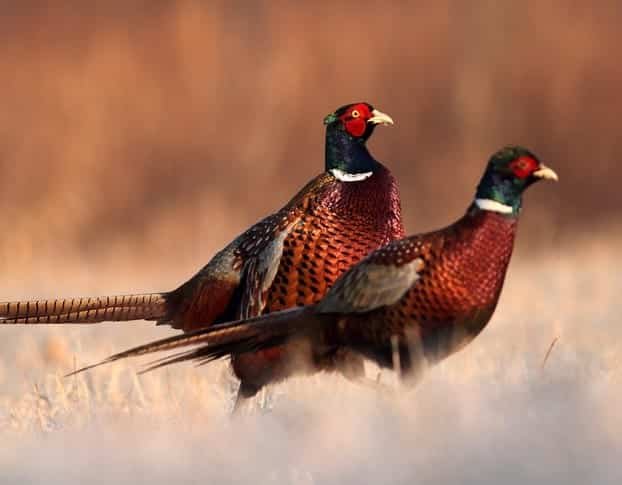
Conclusion
Mastering shot placement and improving shooting accuracy are pivotal skills for successful pheasant hunting. Aiming for flying pheasants’ head or neck region increases the chances of a humane kill by hitting vital organs.
Additionally, practicing proper stance, footwork, timing, and maintaining focus during your shots can significantly enhance your accuracy when shooting at moving targets. Enjoying a day in nature while honing your hunting skills adds to the excitement and satisfaction of pheasant hunting.
Remember to prioritize safety measures and adhere to local regulations while engaging in this thrilling sport. So go forth confidently and embrace the challenge of pursuing these beautiful game birds – may each shot bring you exhilaration and success!
